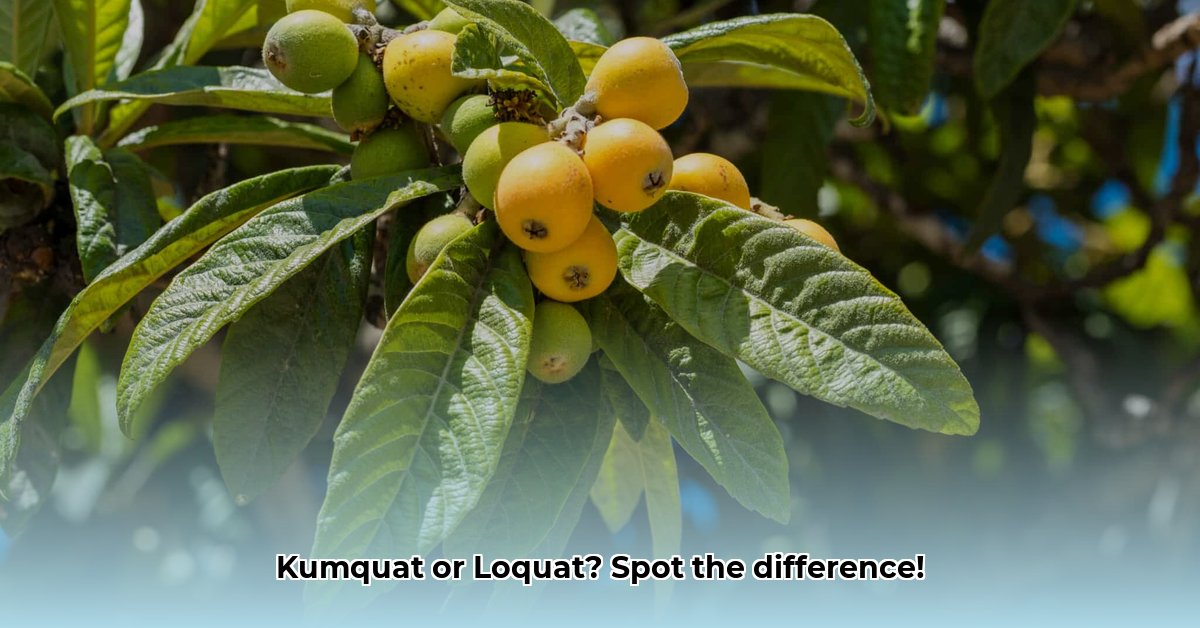Kumquats and loquats—two fruits with similar-sounding names, yet remarkably distinct characteristics. One, a vibrant citrus jewel bursting with tangy sweetness; the other, a mellow, subtly sweet fruit reminiscent of apricot and plum. This article provides a comprehensive comparison, guiding you through their unique qualities and helping you decide which fruit best suits your palate and gardening aspirations.
Decoding the Differences: A Detailed Look
Let’s explore the key characteristics that distinguish these two fascinating fruits. A side-by-side comparison highlights their individuality.
Kumquat vs. Loquat: A Direct Comparison
| Feature | Kumquat | Loquat |
|---|---|---|
| Family | Rutaceae (Citrus) | Rosaceae (Rose) |
| Appearance | Small, oval, bright orange, resembling a miniature orange | Pear-shaped, yellow-orange, sometimes with a rosy blush; fuzzy skin |
| Taste | Tangy, sweet, tart flesh with a sweet edible peel | Sweet, subtly tart, notes of apricot, plum, and cherry |
| Texture | Firm, slightly chewy due to the edible peel | Soft, delicate, juicy |
| Size | 1-2 inches long | 1-3 inches long |
| Season | Winter (December-February) | Spring/Early Summer (April-June) |
| Uses | Eaten whole, marmalades, jams, jellies, savory dishes, candied | Eaten fresh, jams, jellies, pies, chutneys, desserts |
| Nutrition | High in Vitamin C, fiber, antioxidants | Good source of Vitamin A, potassium, fiber, antioxidants |
| Growing Conditions | Subtropical, full sun, well-drained soil, frost-sensitive | Subtropical to mildly temperate, full sun, adaptable to various soils, frost-sensitive |
| Price | Moderate, varies with season and location | Moderate, varies with season and location |
| Image |
Delving Deeper: Expanding on the Distinctions
The table above provides a concise overview. Now, let’s delve deeper into each characteristic, exploring the nuances and subtleties that make these fruits so unique.
Family Ties
Kumquats belong to the Rutaceae family, firmly placing them within the citrus family, alongside oranges, lemons, and grapefruits. Loquats, surprisingly, are members of the Rosaceae family, better known as the rose family, sharing kinship with apples, pears, and roses. This fundamental difference hints at their disparate characteristics.
Appearance and Texture: A Visual and Tactile Exploration
Kumquats are small, vibrant orange jewels, oval-shaped and resembling miniature oranges. Their smooth, thin skin is a key feature, as it’s entirely edible and contributes to the fruit’s unique flavor profile. Loquats, larger and pear-shaped, boast a yellow-orange hue, often with a delicate rosy blush. Their skin, unlike the kumquat’s, is fuzzy and inedible, best peeled before consumption. The loquat’s flesh is soft, juicy, and delicate, offering a melt-in-your-mouth experience.
A Symphony of Flavors: Tangy vs. Sweet
The flavor profiles of kumquats and loquats offer a delightful contrast. Kumquats deliver a burst of tangy sweetness, a surprising interplay of tart flesh and sweet peel. This dynamic flavor combination makes them a refreshing and invigorating treat. Loquats, in contrast, present a mellower sweetness, often likened to a blend of apricot, plum, and cherry, with a subtle citrus undertone. Their flavor profile is delicate and nuanced, appealing to those who prefer a less intense citrus experience.
Culinary Versatility: From Sweet to Savory
Both fruits offer a range of culinary possibilities. Kumquats, with their unique sweet-tart balance and edible skin, are remarkably versatile. They shine in marmalades, jams, and jellies, and their zest adds a vibrant touch to savory dishes, salads, and even meat or fish sauces. Candied kumquats are a delightful treat, and they can even be incorporated into cocktails for a citrusy twist. Loquats, typically enjoyed fresh, also lend their delicate sweetness to jams, jellies, pies, and other desserts. Their soft texture makes them ideal for smoothies, sauces, or simply as a refreshing addition to fruit salads. Ongoing research suggests potential applications for loquat extracts in beverages and health products, highlighting the fruit’s untapped potential.
Growing Guides: Sun, Soil, and Sensitivity
Both kumquats and loquats thrive in warm, sunny climates, reflecting their subtropical origins. However, their specific needs differ. Kumquats, while preferring full sun and well-drained soil, exhibit greater cold tolerance than loquats, withstanding temperatures down to 20°F. Loquats, more sensitive to frost, prefer consistently warm conditions and are damaged below 27°F. They are adaptable to various soil types but demand consistent warmth for optimal growth. Consult local gardening resources or agricultural extension offices for specific guidance tailored to your region.
Nutritional Benefits: Vitamins, Fiber, and Antioxidants
Both fruits contribute valuable nutrients to a healthy diet. Kumquats are an excellent source of Vitamin C, a potent antioxidant that bolsters immune function. They also provide dietary fiber, promoting digestive health. Loquats offer a good source of Vitamin A, essential for vision and skin health, along with potassium and dietary fiber. Current research continues to explore the potential health benefits of both fruits.
Conclusion: Choosing Your Champion
In the kumquat vs. loquat contest, there’s no single winner. The ideal choice depends on your individual preferences. For a tangy, bite-sized, readily edible snack, the kumquat reigns supreme. If a sweeter, juicier fruit for desserts or fresh consumption is your desire, the loquat claims the crown. Explore both, discover your favorite, and savor the unique qualities each fruit offers.
- Weight Loss Supplements That Work and Those That Dont - October 31, 2025
- Male Eating Disorders Often Missed but Increasingly Prevalent - October 29, 2025
- Males With Anorexia Nervosa Have Distinct Symptoms and Treatment Needs - October 28, 2025










